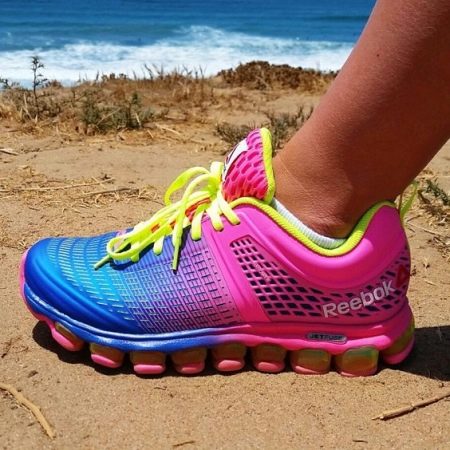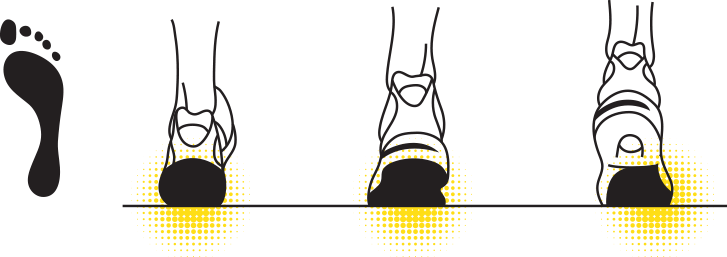Running is one of the most popular forms of exercise. The appeal of running is its simplicity - get up, put your shoes on, go outside and run. Especially in the summer. To avoid injury and get the most out of your workouts, you need to choose running shoes responsibly. We found out what you should pay attention to when buying running shoes.

Features of running shoes:
Cushioning. It is often located in the heel part of the sole, but can also be in the toe or evenly distributed throughout the entire sole. Today, many well-known manufacturers make running shoes with cushioning elements. They absorb shocks and minimize injuries. When choosing such shoes pay attention to your weight. The more it is, the more cushioning elements should be in sneakers.
Outsole. A very important point in the selection of running shoes. The sole determines how much stress your feet and spine will receive. It should be flexible and soft in the front of the sneaker. The heel should have abrasion-resistant rubber inserts.
Material of manufacture. Running shoes are never made of leather or poorly "breathable" materials. Rigid elements upper sneaker may be only in the heel part. And with minimal contact with the foot - not to rub or put pressure on the Achilles tendon.
Lacing. It's better if its loops are not joined by a rigid bar, then this will allow you to tighten the sneaker on the foot. The lacing itself should be crossed asymmetrically - closer to the inside of the foot.
Weight. Running sneakers don't have to be lightweight. Amateur athletes are better to use "technological models", which are equipped with cushioning inserts, fixation elements and other "helpers". Accordingly, the equipment depends on the weight of the shoes. But it is better if the weight of the pair does not exceed 400 g.
Size. Measure running shoes is better in the evening, when the foot a little more in size. At the same time choose so that the big toe did not reach the sock 3-4 mm. Why? The fact is that during running the foot increases both in length and width. And if your sneakers fit closely to the foot, you risk blisters or more serious injuries.
Choosing your sneakers based on the surface.
An important factor in choosing sneakers is the surface you plan to run on. The sole of the sneaker depends on this first and foremost.
For running on treadmills, asphalt and other hard flat surfaces suitable flat soft sole.
For dirt tracks and soft soils choose a harder sole with a tread. Tread is the grooved lower part of the sneaker with grooves and hollows that improve traction and kickback.
Running in the woods and in bad weather requires an even more aggressive tread, and sometimes iron spikes, so as not to slip on fallen tree trunks, ice, etc. Also, these soles are made rigid to protect the athlete's foot from all sorts of sharp rocks and snags. In addition to soles, off-road shoes often have a sealed mesh, which is more difficult to damage.
What is pronation?
Contrary to misconception, you shouldn't just buy the first sized running shoe that fits. First, you should determine your pronation type.
Pronation is a natural movement that causes the foot to roll inward. Due to the structure of the foot, some runners have:
Insufficient pronation (hypopronation);
excessive (hyperpronation);
Absence of foot blockage - neutral pronation.


Gait analysis, a "wet test" or careful observation of the runner's foot during landing and pushback can help determine pronation.
Gait analysis. How does it work? You take turns wearing different sneakers, chosen especially for you. You estimate your feeling, comfort and convenience. At that time the consultant records your run on the treadmill on the camera. Then the recording is analyzed by a special testing program: leg joint angles at different phases of the run are determined, the general body position and posture are reviewed.

UnderArmour, as a manufacturer of professional running shoes, has a range of running shoes with additional foot stabilization for runners prone to hyperpronation.
After carefully choosing a pair of running shoes, listen to how you feel: walk around in your new shoes, jump, run on a treadmill. If nothing rubs or squeezes, this is "the" perfect pair of running shoes.


You must be logged in to post a comment.